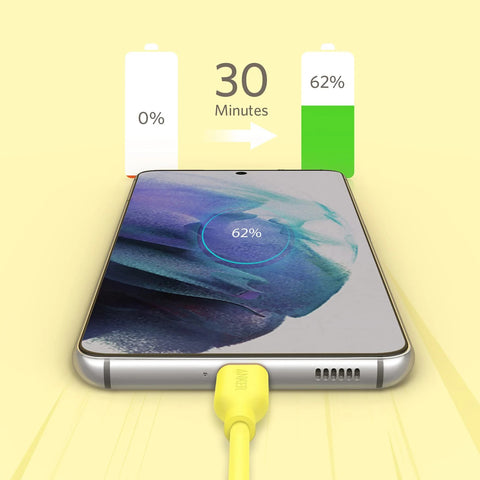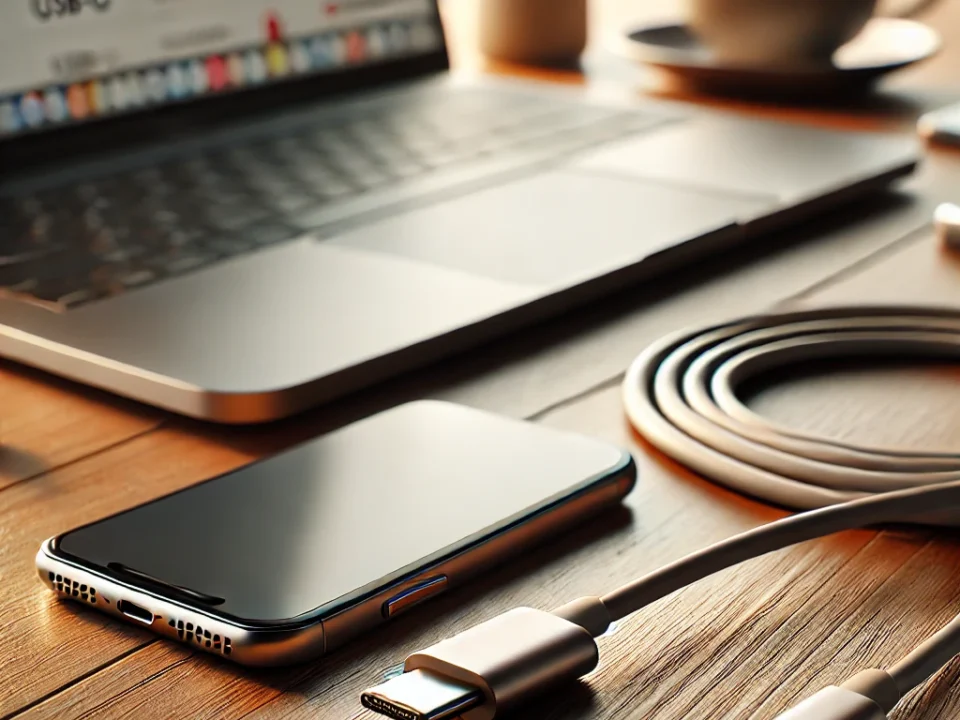
The Best USB-C to Lightning Cable: Speed, Durability, and Performance
2024-12-04
Tech Guide 2024: What You Need to Know About USB-C to Lightning Cables
2024-12-05Introduction to USB-C and Fast Charging
USB-C is a universal connection standard that has gained significant traction in recent years. Characterized by its small, reversible connector, USB-C offers a streamlined solution for connecting various devices, including smartphones, tablets, laptops, and peripherals. The widespread adoption of USB-C across many modern gadgets stems from its capability to handle high data transfer rates alongside charging functionalities, making it a versatile choice for consumers and manufacturers alike.

One of the most noteworthy advancements associated with USB-C technology is fast charging. Unlike traditional USB standards, which generally provide lower charging rates, fast charging allows for a more efficient power delivery to devices. This is particularly beneficial for users who seek to minimize downtime by quickly recharging their devices. Fast charging technologies can vary widely, with some adopting proprietary solutions and others utilizing established standards, such as USB Power Delivery (USB PD). This diversity has led to increased consumer awareness regarding fast charging capabilities and the importance of compatibility in their USB-C cables.
As a result, consumers are now more cautious about ensuring that their USB-C cables are capable of supporting fast charging features. It is essential to understand that while all USB-C cables utilize the same connector, the internal wiring and components can differ significantly. Not all USB-C cables are engineered to facilitate rapid power transfer, which can potentially lead to confusion or dissatisfaction. For instance, the TPE USB A to USB-Type-C Cable is specifically designed with fast charging capabilities in mind, ensuring efficient power delivery for devices that require quick charging. Many users are eager to learn how to differentiate between standard USB-C cables and those that support fast charging so they can make informed purchasing decisions that align with their charging needs.
How USB-C Technology Works
USB-C, or Universal Serial Bus Type-C, is a revolutionary connector that distinguishes itself from previous USB versions through its reversible design and enhanced capabilities. This compact cable type provides a multitude of functionalities, primarily focusing on data transfer and power delivery. The USB-C connector harnesses the USB Power Delivery (PD) protocol, enabling it to carry higher power levels than its predecessors, thus supporting faster charging capabilities and allowing devices to charge more efficiently.
The USB Power Delivery specification is fundamental in determining how much power a USB-C cable can manage. Unlike older USB standards, USB-C can transmit up to 100 watts, accommodating a wider range of devices, from smartphones to laptops. This variance in power output is largely attributed to the negotiation that takes place between the connected devices, where they communicate their power requirements. This intelligent power distribution means that a USB-C cable can deliver the necessary wattage to charge devices swiftly while ensuring compatibility.
Moreover, USB-C cables also excel in data transfer, capable of handling speeds up to 10 Gbps with USB 3.1 and even 40 Gbps with Thunderbolt 3. The ability to transfer large amounts of data rapidly is particularly beneficial for users who frequently engage in high-bandwidth activities such as video editing or large file transfers. For example, the TPE USB A to USB-Type-C Cable is engineered to support high-speed data transfer, making it an excellent choice for users who require fast and reliable connectivity. Despite some common misconceptions, not all USB-C cables support these advanced features; the standards they comply with play a crucial role in determining their functionality. Thus, consumers must choose cables that meet the necessary specifications needed for their devices to take full advantage of USB-C technology.
Factors Affecting Fast Charging Capability
The capabilities of USB-C cables in terms of fast charging are dictated by several critical factors. Understanding these variables is essential for consumers seeking efficient charging solutions. First, the quality of the cable plays a significant role. Higher-quality cables, which are typically constructed from superior materials and meet stringent manufacturing standards, are more likely to support the higher current levels required for fast charging. In contrast, lower-quality cables may underperform, leading to insufficient power delivery.
Another important aspect to consider is the cable gauge, or thickness. Generally, thicker cables are capable of carrying more current due to their larger wire cross-sectional area, thus enhancing their fast charging capabilities. Data transfer speeds and charging performance can be adversely affected if a cable is not adequately thick, particularly when handling the increased power demands typical of fast charging.
Furthermore, the length of the cable influences its performance. Longer cables can experience voltage drops, which may hinder the delivery of the necessary power for fast charging. Ideally, a shorter cable is preferable to minimize power loss, although modern quality cables are designed to mitigate these effects.
Additionally, the rating of the USB-C cable must be taken into account. Cables labeled as USB 2.0 are not designed to support fast charging as effectively as those identified as USB 3.0 or higher, which can manage greater data and power transmission. Lastly, fast charging does not only depend on the cable; compatible chargers and devices also play a vital role in achieving the desired charging speeds. Ensuring that all components of the charging system are compatible and of high quality is imperative for optimal performance.
Common Myths and Misconceptions About USB-C Cables
As USB-C cables have gained popularity, a number of myths and misconceptions have emerged, leading to confusion among consumers. One prevalent myth is the idea that all USB-C cables inherently support fast charging. This belief is misleading. While USB-C is designed to be versatile and more advanced than previous USB standards, not every USB-C cable is capable of delivering high power for fast charging. For example, the TPE USB A to USB-Type-C Cable is specifically designed to support fast charging, ensuring optimal power delivery. The speed and efficiency of charging depend on several factors, including cable specification, power delivery (PD) support, and the devices being connected.
Another common misconception is that any USB-C cable can be used with any device. While USB-C is a standardized connector, this does not guarantee compatibility for all functions across devices. For instance, some USB-C cables may only support data transfer at lower speeds or charge devices at suboptimal rates. To ensure optimal performance, consumers should look for cables that explicitly state their support for specific features such as fast charging, video output, and data transfer rates.
Additionally, some users mistakenly assume that longer cables will always deliver the same charging performance as shorter ones. In reality, longer cables can lead to signal degradation, which may reduce charging speed and overall efficiency. When selecting a USB-C cable, consumers should prioritize cable length, along with features such as build quality and specifications that align with their devices’ requirements. It is essential to select cables certified by reputable manufacturers to ensure reliable performance.
In conclusion, understanding the facts about USB-C cables is crucial for consumers. By dispelling these myths, individuals can make informed decisions when choosing cables that not only suit their needs but also optimize their devices’ performance.
Reference Website:Are All USB-C Fast Charging: Disentangling Myths and Facts







